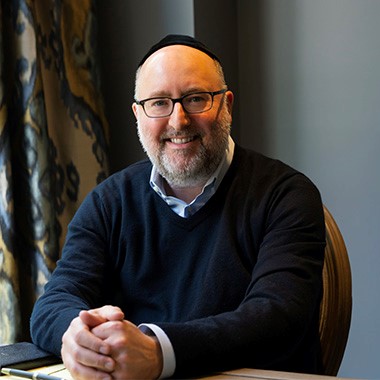
This article was previously published in 2019.
The portion Vayetze begins with Jacob running away. He comes to a well that has a large, heavy stone on top of it, where three shepherds are waiting for the other shepherds to come help them move it; however, Jacob proceeds to remove the stone all by himself.
“What is the secret of this well that Jacob finds?”
Since we know that everything in the Torah has great secrets within it, what is the secret of this well that Jacob finds? As Nachmanides, the Ramban, points out, there must be very important Light and understanding within these stories; it can't just be a story about finding and uncovering wells. And in order to really understand this, we have to go back to the previous portion, Toldot, where there is a discussion about wells that Abraham dug, and Isaac re-dug.
In Toldot, there was a discussion about Isaac starting to dig the same wells that his father Abraham had dug, but that the other inhabitants of the land had covered up. And it says that the servants of Isaac dug, and they found a wellspring of living water. When they uncovered this wellspring of living water, a fight developed between the shepherds, each claiming to own the water of that well. There was a second well that they dug and, again, there were fights, and they moved away from there and dug a third well; finally, with this one, there was no argument.
“This reality also exists within every single one of us.”
The Ramban is very clear about the need and purpose for these verses, telling us that this whole discussion – of both the previous portion Toldot regarding the wells Abraham and Isaac dug, and this portion of Vayetze regarding the well of Jacob – is not speaking about what happened in the past, but rather, it’s speaking about our time.
When it talks in the Torah about a wellspring of living water, it is not referring to physical water or the finding of physical wells, but to the resting place of the Light of the Creator. Therefore, the Torah specifically uses the term, “a wellspring of living water,” because it signifies the resting place of the Light of the Creator that will be built. In the First and Second Temples there was a place where the Light rested, and anybody who had a need, anybody who had a problem, could immediately go to the Temple and draw down the wellspring of living Light that resided there.
The Ramban then goes on to explain why there were three wells. The first two Temples, the first two resting places of the Light of the Creator that were built by the descendants of Abraham and Isaac, were destroyed. The secret of the third well, then, is that it represents the Third Temple, the time and place where the totality of the Light of the Creator will be revealed and never removed. Abraham and Isaac represent the First and Second Temples, which were great Lights when they were in existence, but were destroyed. The Third Temple, the secret of the well of Jacob, is the one that will never be destroyed. It is the place from which the Light of the Gemar HaTikun, the Light that will remove all pain, suffering, and death from this world, will come.
When the Torah speaks about the wells, it is speaking about the opening up of the channel of Light; that is the secret. Abraham and Isaac opened up channels that were eventually closed again, but in the case of Jacob, the well that is spoken about in Vayetze is a connection to the flow of Light of the Gemar HaTikun, the End of the Correction. So, when we read about the well of Jacob in Vayetze, we're actually awakening and connecting to the Light of the Third Temple that will be revealed, and last forever.
The kabbalists explain that Abraham, Isaac, and Jacob viewed the purpose of their lives as being to uncover these existing, but un-accessed, channels of Light. Abraham did it, but then negativity came and hid that Light and wisdom. Isaac came and uncovered it again, but it was again concealed, until Jacob, in Vayetze, opens them up. And it is important to understand that this reality also exists within every single one of us; it’s not just the work of Abraham, Isaac, and Jacob. Because, really, what is our work? It is to go to somebody who finds him or herself in the clutches of the physical world and show that they can open up a conduit of Light, of these living waters.
It’s an important consciousness we are given. We can begin to view our life as Abraham, Isaac, and Jacob viewed theirs - to awaken these pathways, this living water that is the Light of the Creator. That's how they saw it; when Abraham spoke to somebody, for example, it wasn't that he was trying to impart wisdom or give over some understanding. Rather, it was that his simple consciousness was, “My job here is to re-attach this person to a flow of the Light of the Creator,” nothing more. We learn from this that when somebody is in need of assistance, we do not need to give them some new wisdom or understanding. Instead, when we talk to them, we should be thinking, “I don't have to do anything new for them; I just have to awaken them to this flow of Light, this wellspring of living water that is the Light of the Creator.” It is a beautiful and important understanding we learn from Vayetze: the purpose of our interactions with people is simply to re-attach them to this flow of the living water.